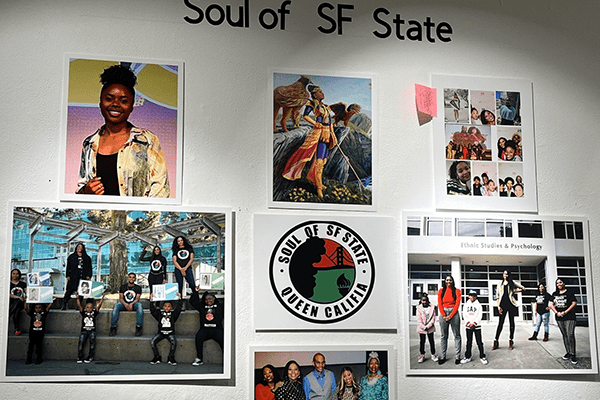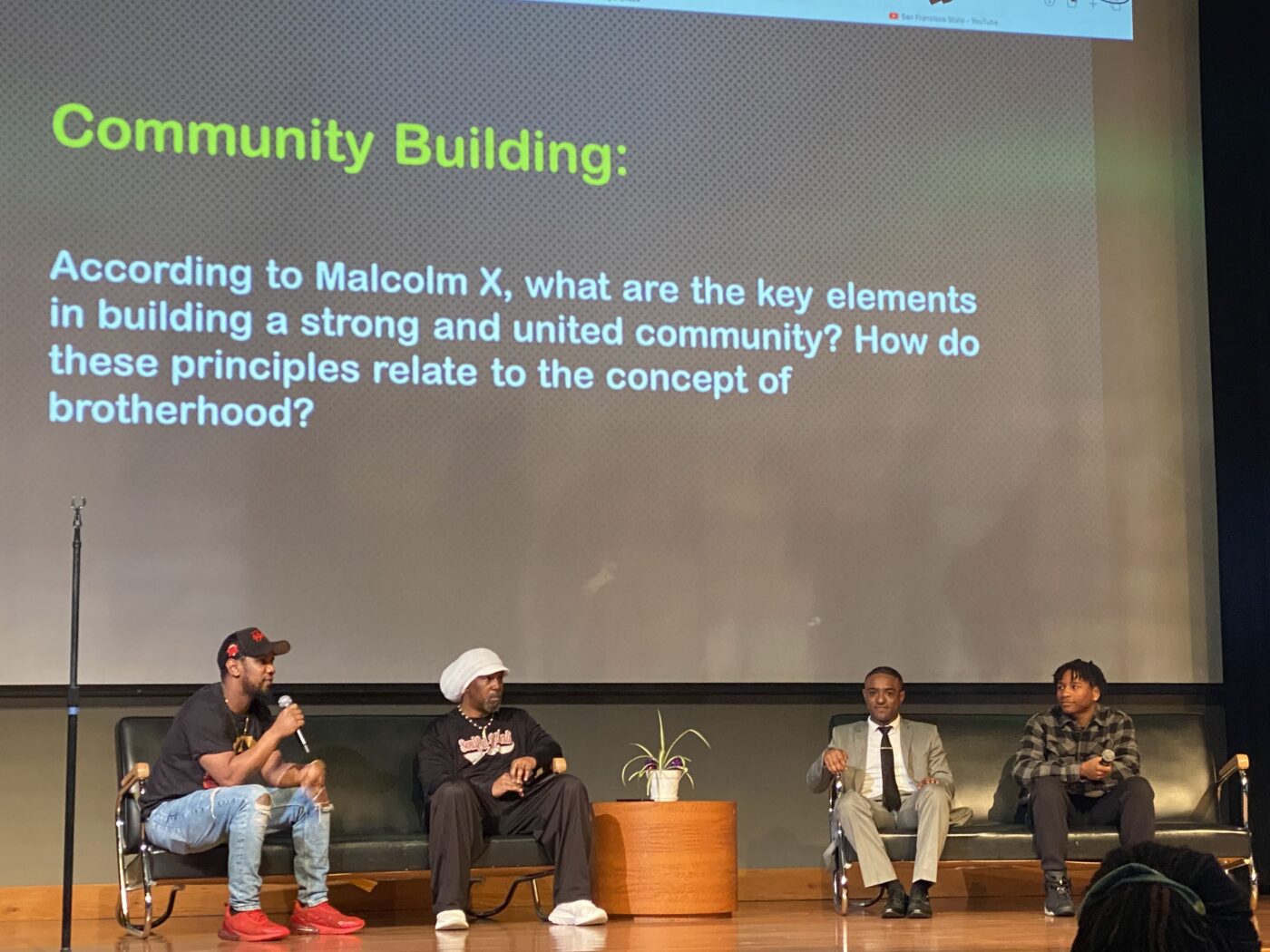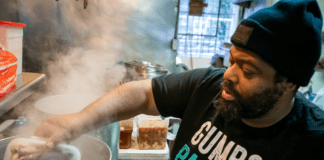
by Zaire Saunders
“When you start from slavery, everything looks like progress.” Statements made during the 28th annual commemoration of San Francisco State’s Malcolm X mural were deeply heartfelt. The event was held in Jack Adams Hall and featured a keynote address by Demnlus Johnson III, a former Richmond city councilman.
At an evening dedicated to the legacy of Malcolm X, former Richmond Councilman Johnson’s words were accompanied by remarks from Rodney Alamo Brown, another Richmond resident and activist. Both are second generation Black Panthers. Brown’s addition to a four-person panel – student and alumni Jermaine and Kevin respectively made up the other half – made for intriguing conversations on the philosophy of Malcolm’s ideology and how his teachings can be applied to contemporary issues plaguing the Black community.

The panelists answered a variety of questions concerning allyship and brotherhood, divisions amongst Black men and their counterparts and even questions asked by the audience.
The entire evening was brought together through the collaboration of Tachelle Herron Lane and Dr. Shanice Robinson-Blacknell. Dr. Robinson-Blacknell, senior director of culture and social justice and a faculty lecturer for the Graduate College of Education and Africana Studies Department. About the importance of the event and SFSU’s backing behind the Black Arts Wall of Fame, Blacknell had this to say:
“I came to my sister (Dr. Herron) and friend with an idea and said, ‘I don’t have a budget.’ She said, ‘Don’t worry about it. What’s your idea – let’s make it happen.’ And so because she made it happen there are so many Black students who can see themselves in Tachelle, they can see themselves in Dr. Flowers, in Ray Thompson, in Danny Glover.”
Dr. Robinson-Blacknell, adamant on crediting the rightful supporters of the initiative, was just as quick to name non-supporters, saying, “My supervisor, he complained about not being on the wall, but he didn’t give a damn dime to this Black Wall of Fame.”
Malcolm’s message wasn’t forgotten in the excitement. “It takes a village,” was a phrase used to describe Malcolm’s teachings. “Something that’s more dangerous than a Black man or Woman with a gun is a Black person who can transform the mind. They don’t want us to be educated. That’s why I love Malcolm X so much,” continued Dr. Robinson-Blacknell.
Robinson-Blacknell and Tachelle Heron both agreed with the necessity of community building and bridging, which was quintessential to Malcolm’s work, working across religious faiths, nations and continents to inspire a collective liberation of the minds of those deemed “the wretched of the earth.”
Bay View writer and copy editor Zaire Saunders can be reached at zaire@sfbayview.com.

 Store
Store



